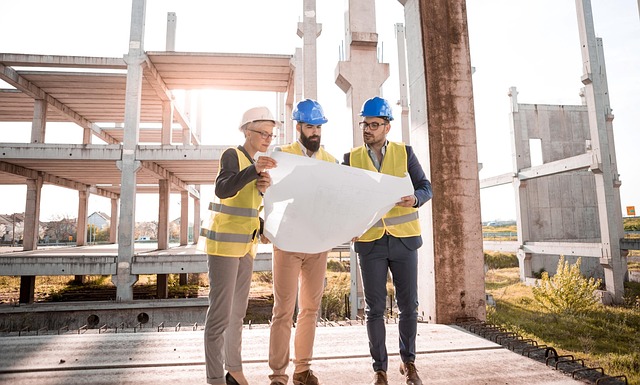Green energy isn’t just a buzzword anymore—it’s turning into the backbone of modern infrastructure. Around the world, international construction companies are building more than just structures; they’re laying the foundation for a cleaner, smarter future. And the way they do it? It’s far more inventive and collaborative than many people think.
Construction Leaders Shaping Sustainable Urban Landscapes
Across cities where skylines evolve by the year, international construction companies are rethinking what a city can be. Their influence goes beyond towering buildings—they’re designing entire neighborhoods with renewable energy, efficient transit, and green building standards from the ground up. These global construction firms are helping cities reduce emissions by installing district heating systems, building zero-energy buildings, and planning developments with renewable infrastructure baked into the blueprints.
What makes their approach stand out is the scale and integration. Instead of treating sustainability as an add-on, many global construction projects treat it as the starting point. Smart lighting systems, rooftop solar grids, and passive design elements now show up in early planning stages. As these practices take root across continents, they’re setting new standards for how future cities will look—and how they’ll function in a world shifting away from fossil fuels.
Bridging Borders Through Solar Mega-Projects
Solar energy has quickly become a symbol of global cooperation, and international construction companies are behind some of the most ambitious solar farms on the planet. These aren’t backyard setups—they’re massive, multi-gigawatt projects in desert plains, coastal lands, and high-altitude areas where sun exposure is optimal. The technology is impressive, but it’s the international teamwork that brings these projects to life.
From sourcing materials in one country to designing and building across another, solar projects stretch across borders. These international partnerships are essential, not just for funding and logistics, but for sharing innovation. Global construction leaders bring technical expertise, infrastructure planning, and workforce coordination into play—all while building facilities that can power millions of homes sustainably. It’s a powerful example of how cross-border collaboration drives progress in renewable energy.
Transforming Waste into Power Through Innovative Facilities
Turning trash into energy might not sound glamorous, but it’s becoming one of the most promising pieces of green infrastructure—and global construction companies are taking it to new levels. In countries where landfill space is scarce, international firms are building advanced waste-to-energy plants that use combustion or anaerobic digestion to create usable power from organic and solid waste. These facilities reduce landfill waste while feeding electricity back into the grid.
But it’s not just about electricity. Many of these projects also generate heat for nearby buildings or produce renewable natural gas for transit systems. International construction companies coordinate design, procurement, and engineering across continents to make these complex plants run efficiently. And as cities struggle with rising waste volumes, this solution offers a cleaner, more productive way to handle what used to be discarded.
Engineering Smarter Cities with Renewable Integration
Global construction isn’t just about concrete and steel—it’s about infrastructure that communicates, adapts, and responds. Smart cities are being engineered with renewable energy at the center, thanks to international firms designing systems where buildings talk to the grid and adjust their energy use based on supply and demand. These firms are laying fiber networks, integrating solar panels, and installing energy storage in ways that turn ordinary cities into living ecosystems of efficiency.
International construction companies are combining digital infrastructure with physical construction to make these systems work. They’re building roads embedded with EV charging lanes, erecting buildings with solar-glass façades, and connecting everything to centralized data platforms. Renewable integration isn’t just about cleaner power—it’s about optimizing how energy moves through the entire city. And these smarter systems are proving essential as more cities prepare for climate challenges ahead.
Eco-Friendly Materials Revolutionizing Infrastructure Globally
Materials matter more than ever. Around the world, international construction companies are shifting away from traditional concrete and steel to greener alternatives like carbon-cured concrete, recycled composites, and low-impact insulation. These eco-friendly materials not only reduce emissions during manufacturing but also help structures remain energy efficient for decades. The result is greener buildings that cost less to heat and cool while standing up to modern performance standards.
What makes this shift global is the sourcing and adaptation process. A global construction company might develop a sustainable material in Europe, test it in the Middle East, and deploy it across projects in Asia or Africa. This cycle of innovation and implementation helps bring new green materials to diverse markets faster than ever before. And as these materials become more available, they’re becoming the new normal in infrastructure projects worldwide.
Multinational Collaboration Accelerates Energy Sustainability
The move toward energy sustainability isn’t happening in isolation. It’s powered by global partnerships, where international construction companies work hand in hand with governments, research institutions, and regional developers. These collaborations speed up timelines, pool resources, and connect innovation across continents. Whether it’s sharing energy modeling software, coordinating off-site fabrication, or streamlining permitting processes, these partnerships make complex energy infrastructure possible.
This multinational teamwork is critical for scaling renewable solutions. When firms from different countries bring their expertise together, it leads to breakthroughs in design, cost reduction, and project efficiency. A wind farm in Africa might rely on turbine tech from Europe, engineering from Asia, and local construction teams—all coordinated by an international construction company pulling every piece into place. It’s this kind of global momentum that’s making sustainable infrastructure a reality, faster than anyone expected.



